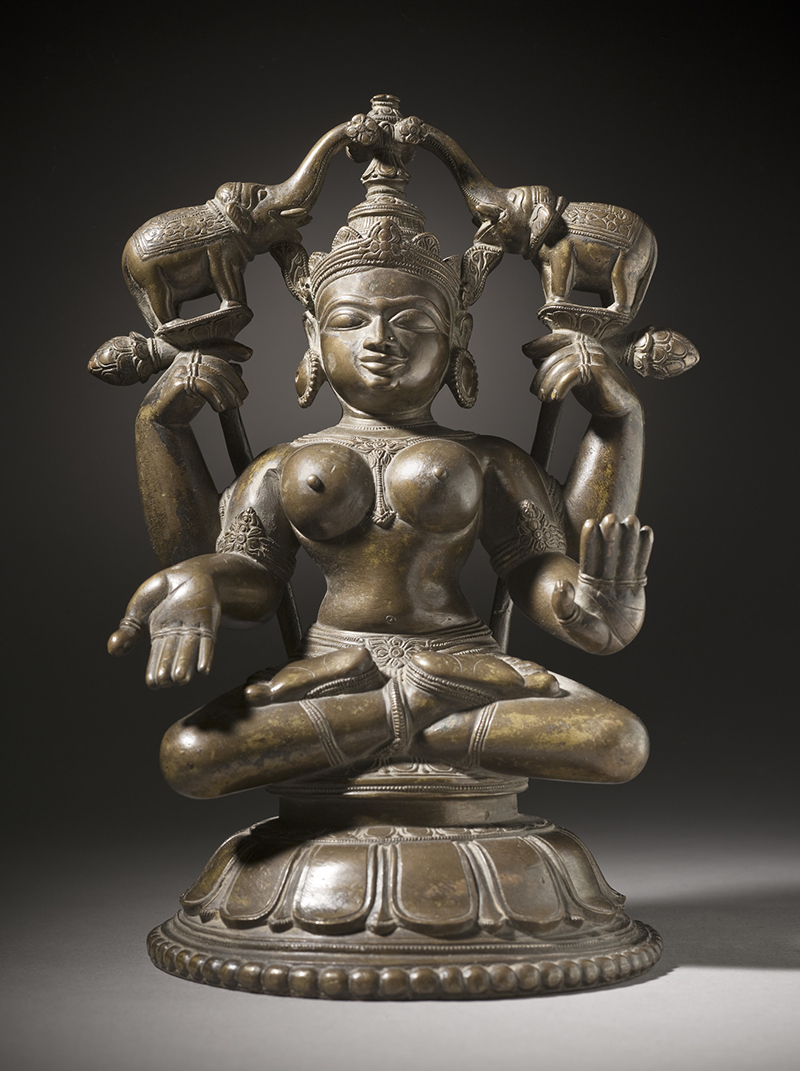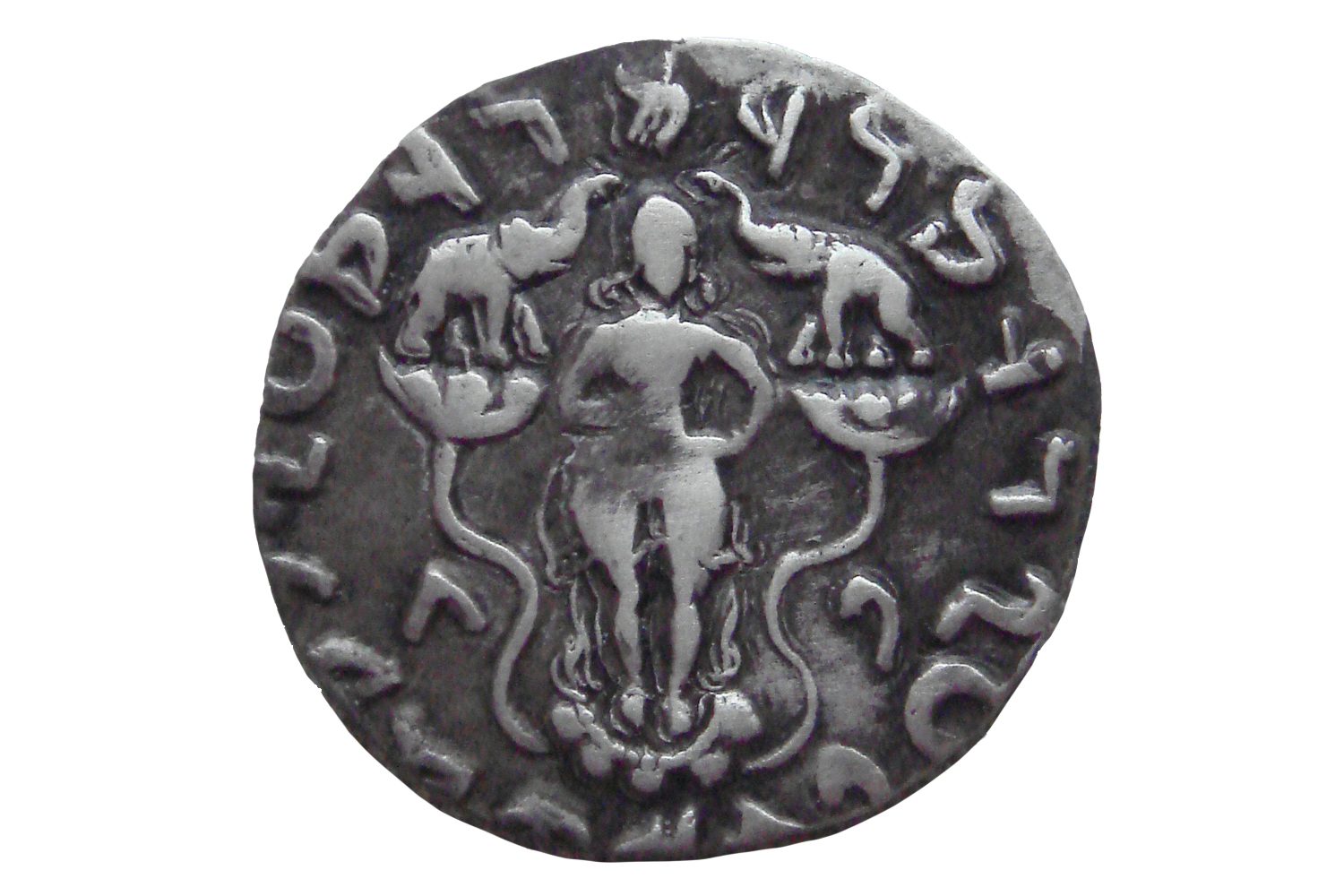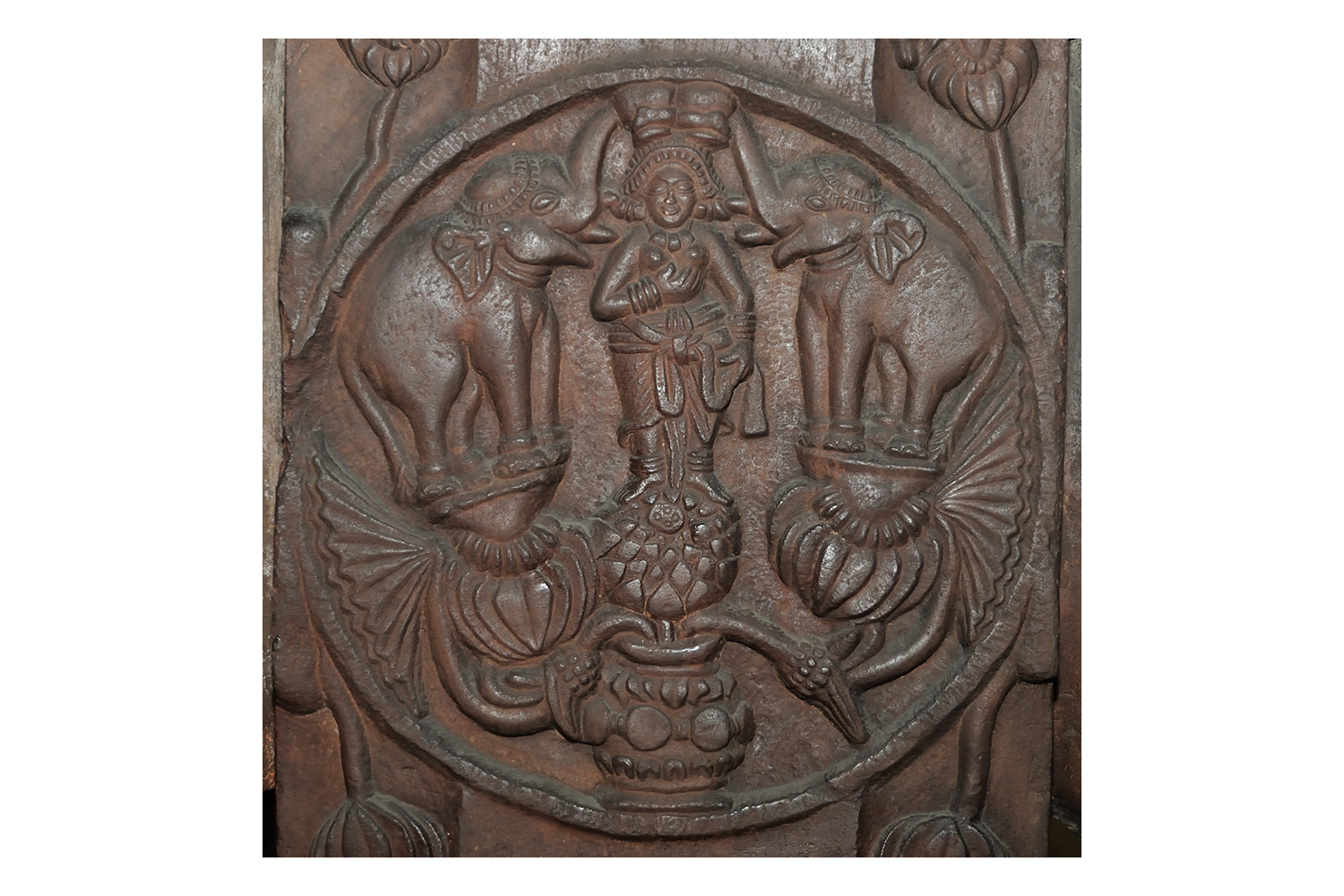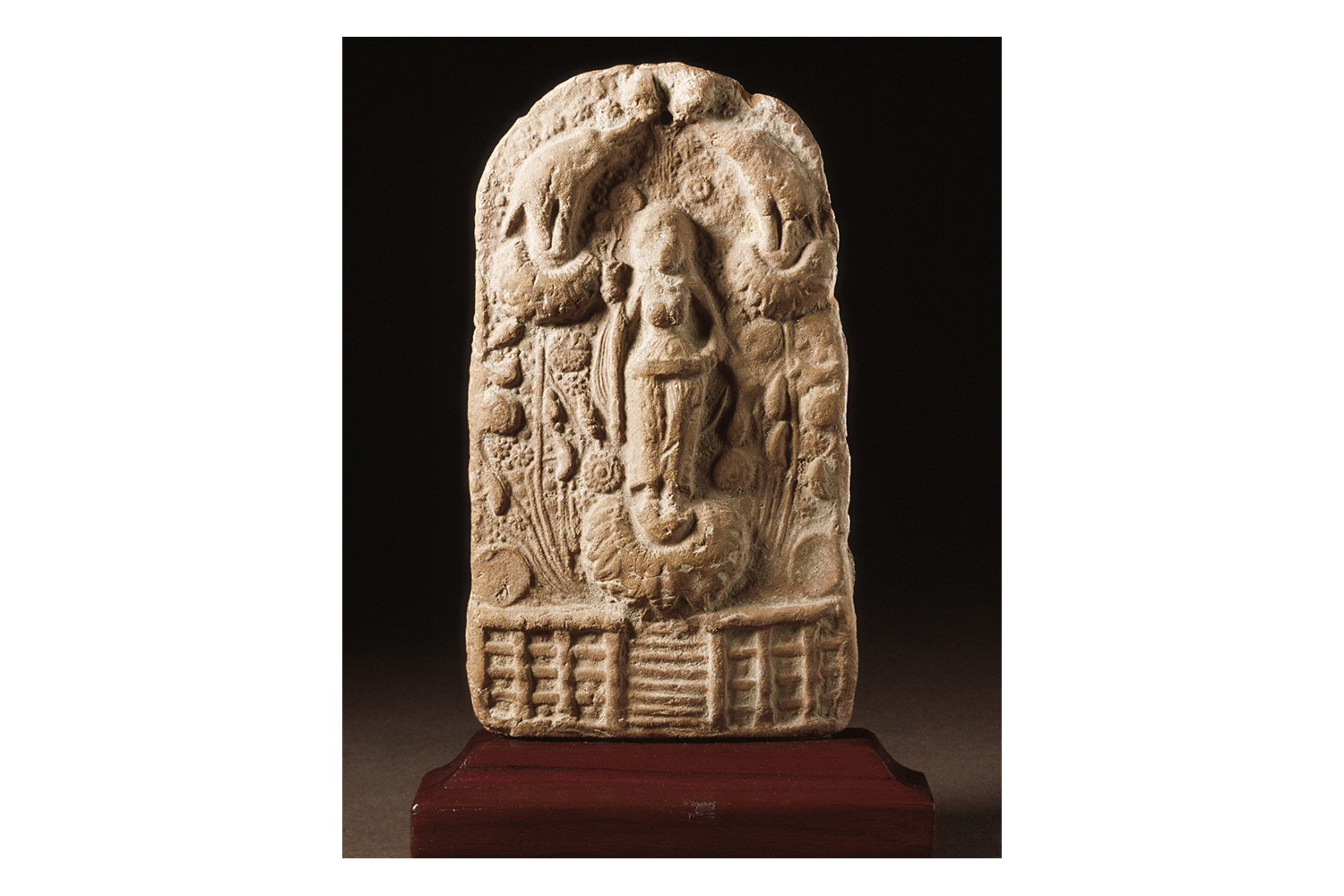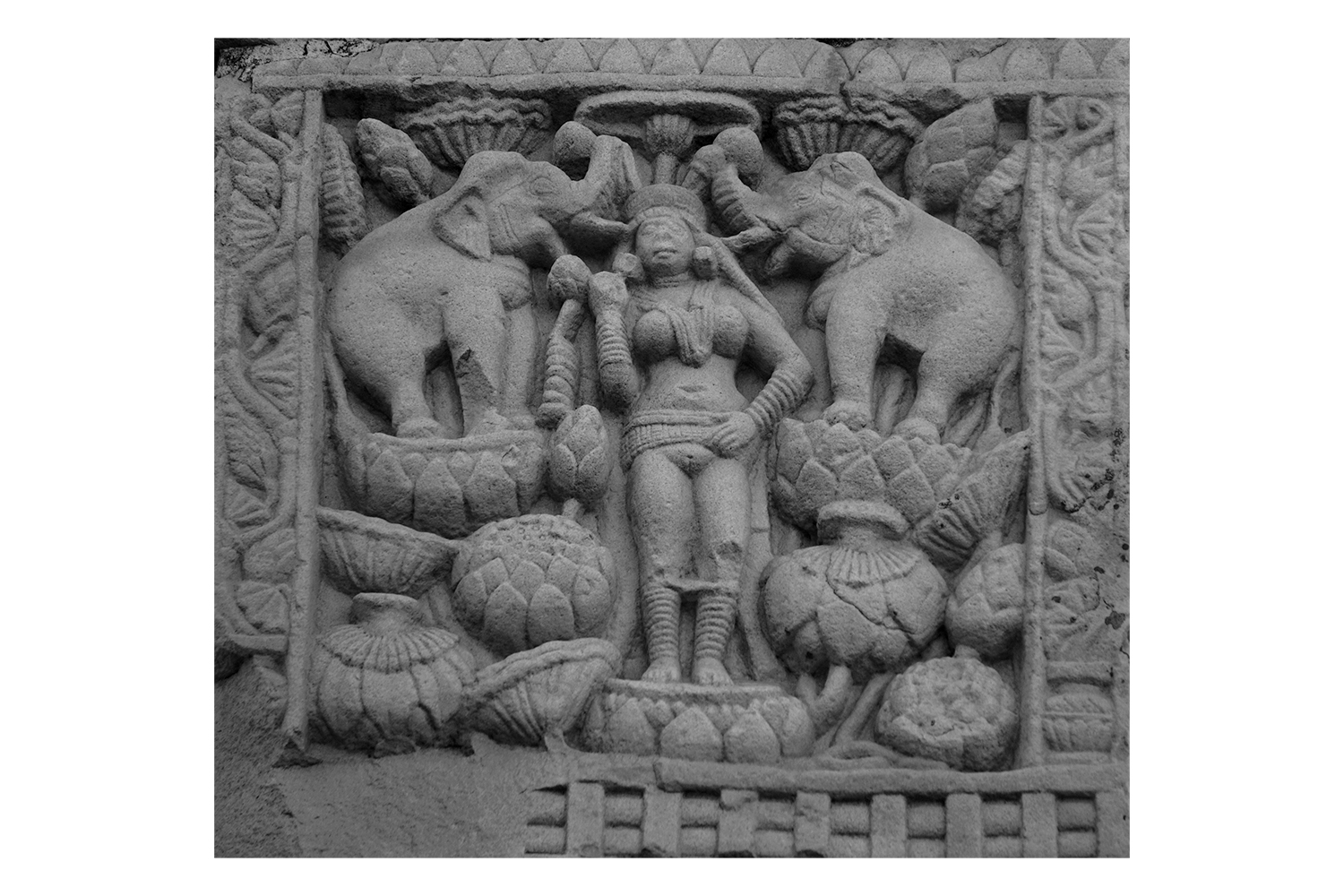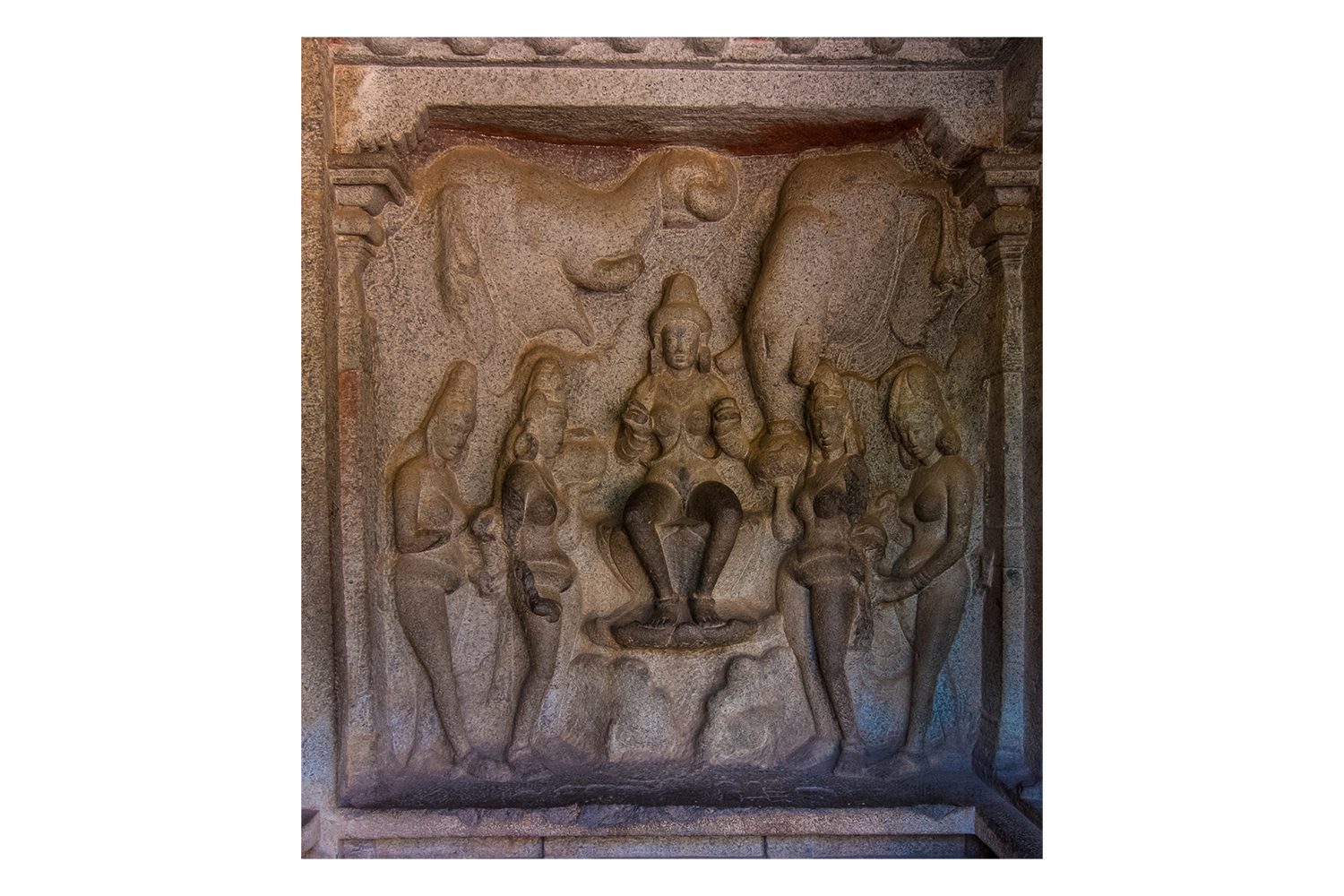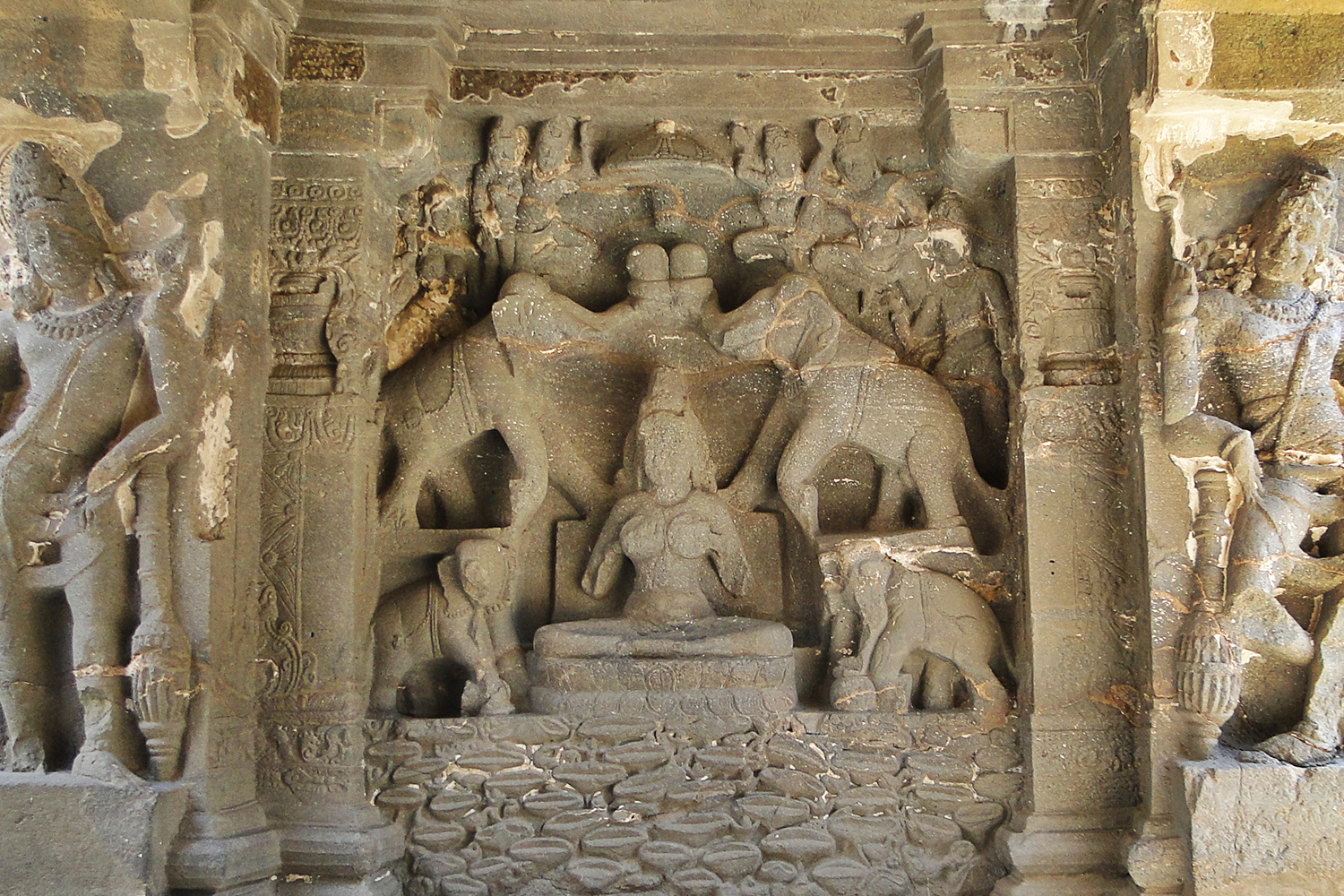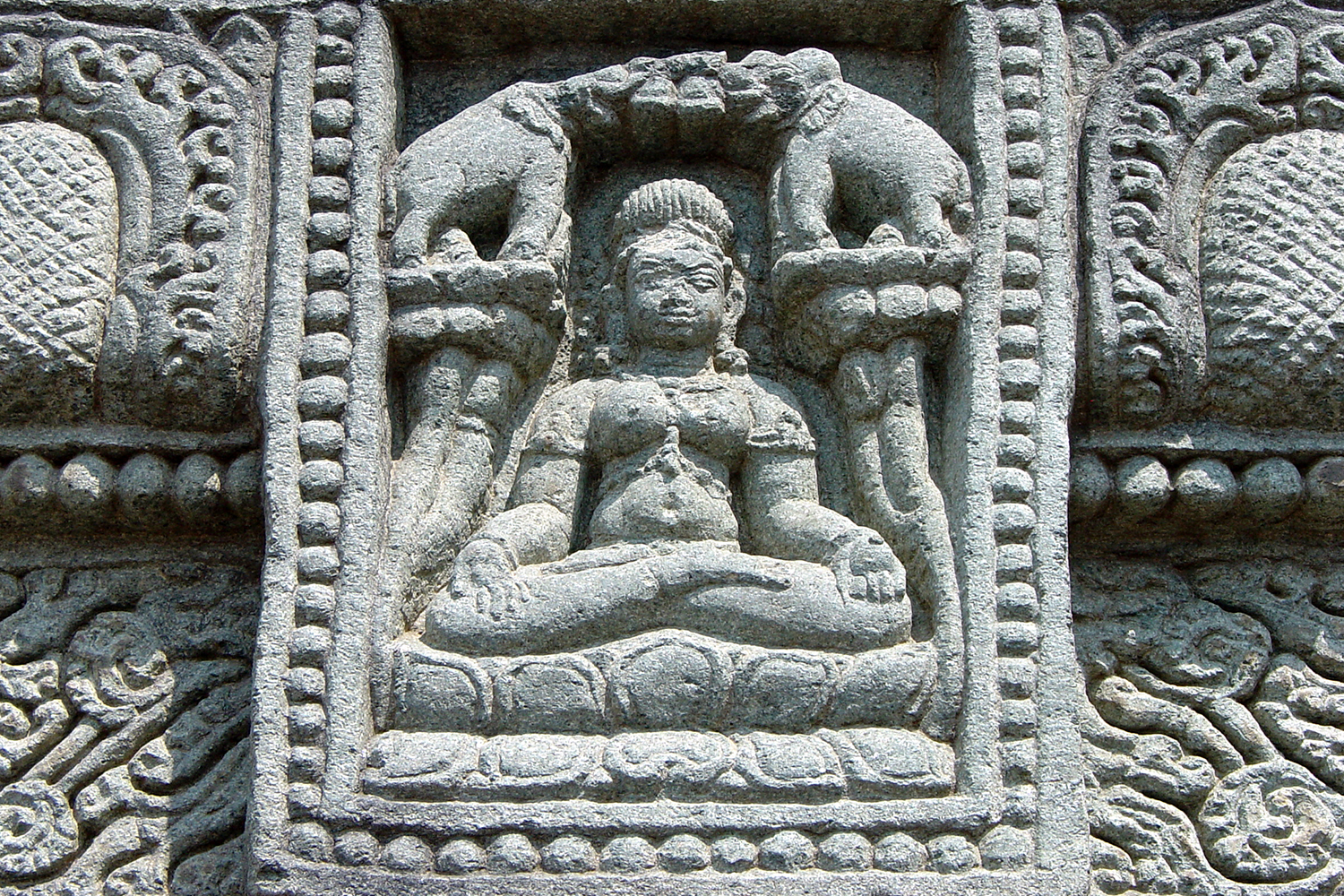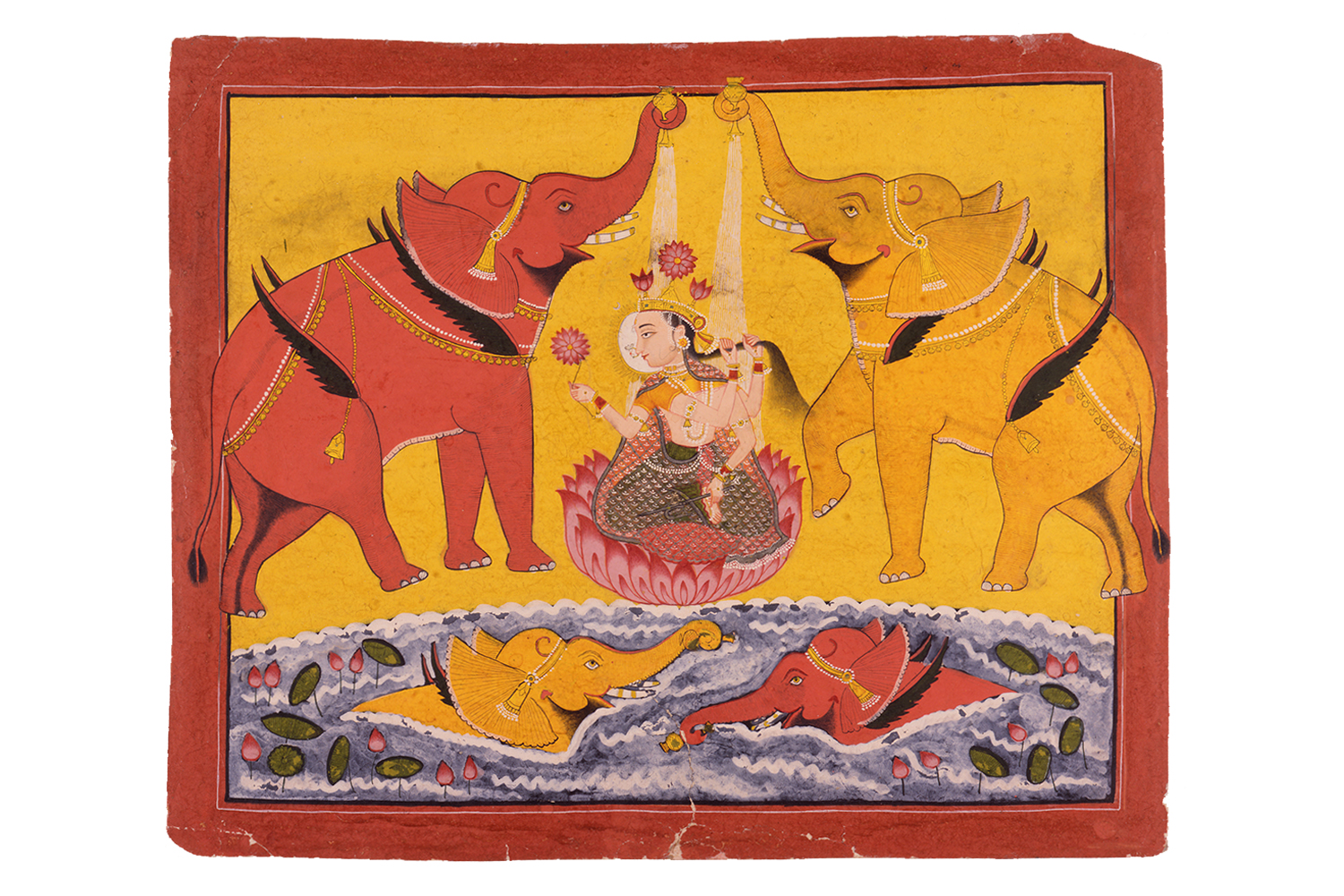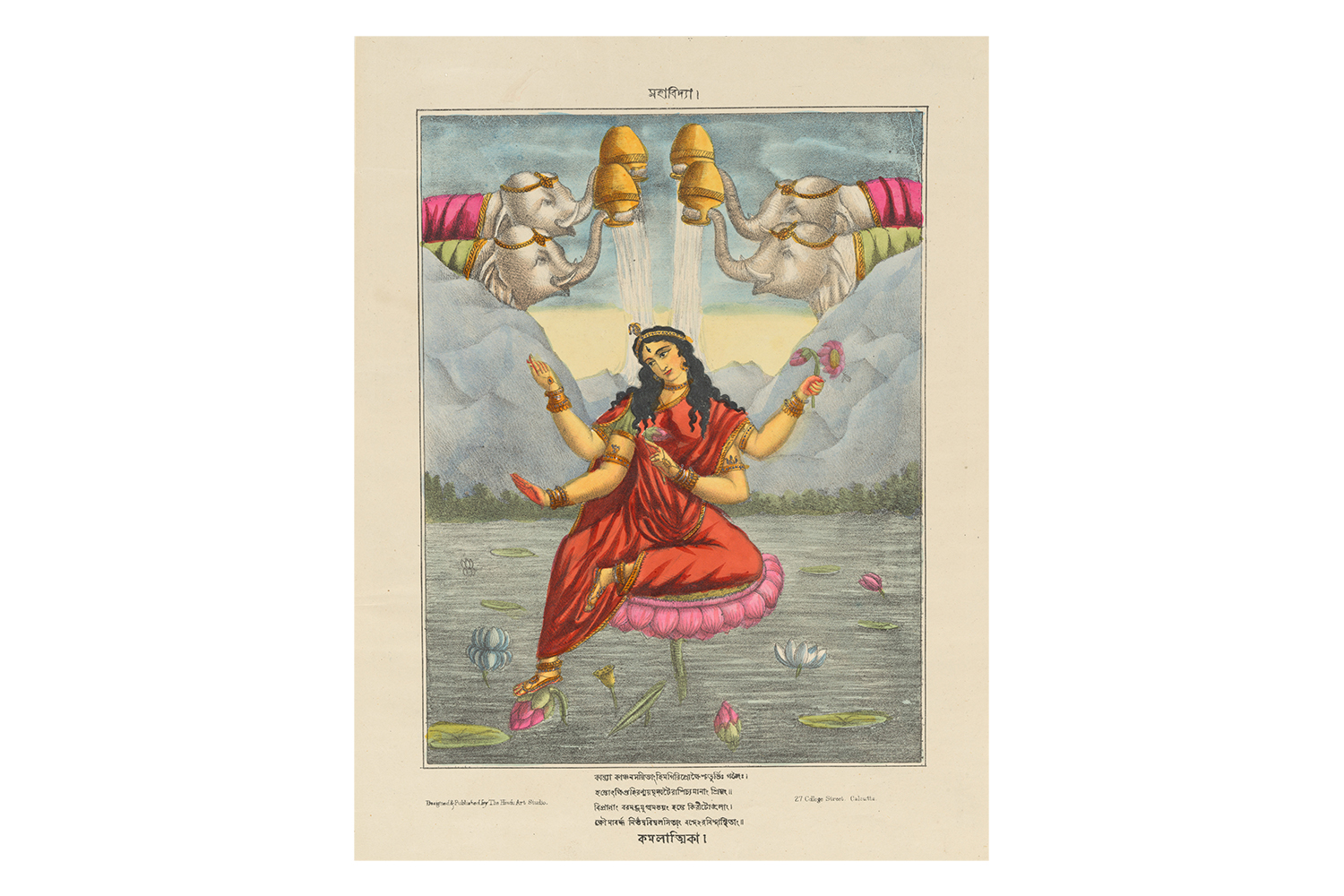ARTICLE
Gajalakshmi
Through the succeeding centuries, Gajalakshmi continued to be depicted in reliefs at religious structures throughout India, with several minor variations in style and iconography. Small images of the goddess appear in places as widely distributed as Dashavatara Temple in Deogarh, Odisha; Kailashanatha Temple in Ellora, Maharashtra; Bhitargaon Temple in Kanpur, Uttar Pradesh; as well as in Jain temples, including the one at Shravanabelagola, Karnataka. A sixth-century example from present-day Jammu and Kashmir, carved from hard stone, shows two lions flanking the deity’s feet, in addition to the elephant in the upper register. A Gajalakshmi image dated to between the eighth and twelfth centuries has also been found from present-day Bangladesh. A popular and auspicious image, Gajalakshmi has generally appeared as a decorative peripheral element in sculptural compositions in religious architecture. Two exceptions appear in the form of full-scale reliefs at the Varaha and Adivaraha caves in Mamallapuram, Tamil Nadu.
In the seventeenth and eighteenth centuries, imagery of the goddess appeared in various schools of Pahari and Rajasthani miniature painting, as well as other regional painting styles, such as Tanjore and Mysore painting. In the colonial period, Gajalakshmi was commonly depicted in paintings and prints made by Kalighat painters and bazaar artists, as well as in Company paintings, particularly in albums of gods and goddesses commissioned by British residents. With the advent of the printing press, images of the goddess became more popular, eventually making their way into textile labels, calendars and other print media.
Gajalakshmi remains a ubiquitous figure in the Hindu pantheon, deified particularly by trading communities because of her association with wealth and prosperity. Images of the deity continue to appear in popular religious prints, as well as on ceremonial coins and other ritual paraphernalia.
Bibliography
Bawa, Seema. “From Aditi/Laksmi to Dugdadharini: A Gendered Analysis of Iconography in Post Mauryan Art.” Proceedings of the Indian History Congress 63 (2002): 121–37. https://www.jstor.org/stable/44158081.
Elgood, Heather. “Exploring the Roots of Village Hinduism in South Asia.” World Archaeology 36, no. 3 (2004): 326–42. https://doi.org/10.1080/0043824042000282777.
Sankrityayan, Niharika K. “Association of Elephants with Goddess Lakshmi: Myth, Ritual, and Temples.” Asian Elephants in Culture & Nature, 2016. http://repository.kln.ac.lk/bitstream/handle/123456789/14229/302-311.pdf?sequence=1.
Singh, Upinder. A History of Ancient and Early Medieval India: From the Stone Age to the 12th Century. India: Pearson, 2016.
van der Geer, Alexandra. Animals in Stone: Indian Mammals Sculptured Through Time. Leiden, Boston: Brill, 2008.




